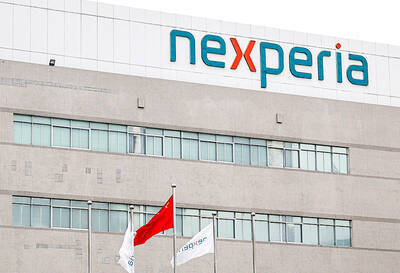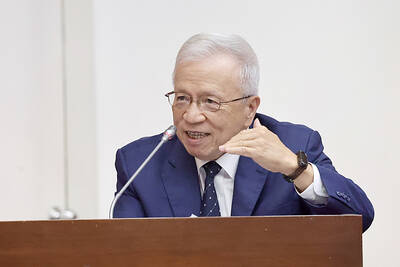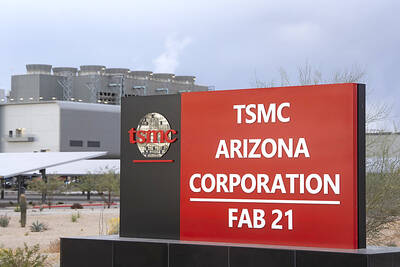Standard & Poor's Ratings Service yesterday released its biannual corporate report card on rated corporate issuers in the region, including China, Taiwan and Hong Kong, concluding that the region's upturning economies have led to an improvement in corporate credit quality.
"[The region's] overall credit quality has improved" since the publication of its report card in October last year, with no corporate downgrades or outlooks changing to negative between September last year and April," the report said.
"For the most part, mainland China has led the way in the current recovery highlighted by the upgrade of the sovereign credit in February 2004," said S&P's Hong Kong-based credit analyst John Bailey.
In late February, Standard & Poor's raised the sovereign rating for China from BBB/positive to BBB+/positive while saying in March that it had no plans to change its credit ratings for Taiwan despite the political upheaval following the nation's presidential election.
With China extending its recovery, there are also increasing signs of a strong rebound in Taiwan's high-tech manufacturing base, Bailey said, adding that, similarly, the outlook on Hong Kong's economy is much brighter than before.
According to the report, growth in Taiwan's industrial production has been led by the semiconductor industry, which has experienced a sustained increase in sales.
However, the political dispute arising from the election could ultimately have a negative impact on the local economy, although it's still too early to tell, Standard & Poor's said in its report.
Against the backdrop of an upcoming property recovery, weak performances by property investors in Hong Kong, which continues to experience a negative rental reversion, remain a negative factor. But Standard & Poor's noted that it will be a matter of time before rental incomes stabilize with underlying economic growth improving in Hong Kong.
Standard & Poor's report expressed concern over China's over-heated economy, saying its main challenge in future will be to slow it down, since some sectors -- including steel, autos, aluminum and property -- are exposed to overcapacity.
In the report, Bailey concluded by saying that "the future direction of corporate credit quality in greater China will depend to a large extent on how sustainable the economic recovery is in the US and how the mainland China government reacts to an overheating economy."

JITTERS: Nexperia has a 20 percent market share for chips powering simpler features such as window controls, and changing supply chains could take years European carmakers are looking into ways to scratch components made with parts from China, spooked by deepening geopolitical spats playing out through chipmaker Nexperia BV and Beijing’s export controls on rare earths. To protect operations from trade ructions, several automakers are pushing major suppliers to find permanent alternatives to Chinese semiconductors, people familiar with the matter said. The industry is considering broader changes to its supply chain to adapt to shifting geopolitics, Europe’s main suppliers lobby CLEPA head Matthias Zink said. “We had some indications already — questions like: ‘How can you supply me without this dependency on China?’” Zink, who also

At least US$50 million for the freedom of an Emirati sheikh: That is the king’s ransom paid two weeks ago to militants linked to al-Qaeda who are pushing to topple the Malian government and impose Islamic law. Alongside a crippling fuel blockade, the Group for the Support of Islam and Muslims (JNIM) has made kidnapping wealthy foreigners for a ransom a pillar of its strategy of “economic jihad.” Its goal: Oust the junta, which has struggled to contain Mali’s decade-long insurgency since taking power following back-to-back coups in 2020 and 2021, by scaring away investors and paralyzing the west African country’s economy.

BUST FEARS: While a KMT legislator asked if an AI bubble could affect Taiwan, the DGBAS minister said the sector appears on track to continue growing The local property market has cooled down moderately following a series of credit control measures designed to contain speculation, the central bank said yesterday, while remaining tight-lipped about potential rule relaxations. Lawmakers in a meeting of the legislature’s Finance Committee voiced concerns to central bank officials that the credit control measures have adversely affected the government’s tax income and small and medium-sized property developers, with limited positive effects. Housing prices have been climbing since 2016, even when the central bank imposed its first set of control measures in 2020, Chinese Nationalist Party (KMT) Legislator Lo Ting-wei (羅廷瑋) said. “Since the second half of

Taiwan Semiconductor Manufacturing Co (TSMC, 台積電) received about NT$147 billion (US$4.71 billion) in subsidies from the US, Japanese, German and Chinese governments over the past two years for its global expansion. Financial data compiled by the world’s largest contract chipmaker showed the company secured NT$4.77 billion in subsidies from the governments in the third quarter, bringing the total for the first three quarters of the year to about NT$71.9 billion. Along with the NT$75.16 billion in financial aid TSMC received last year, the chipmaker obtained NT$147 billion in subsidies in almost two years, the data showed. The subsidies received by its subsidiaries —